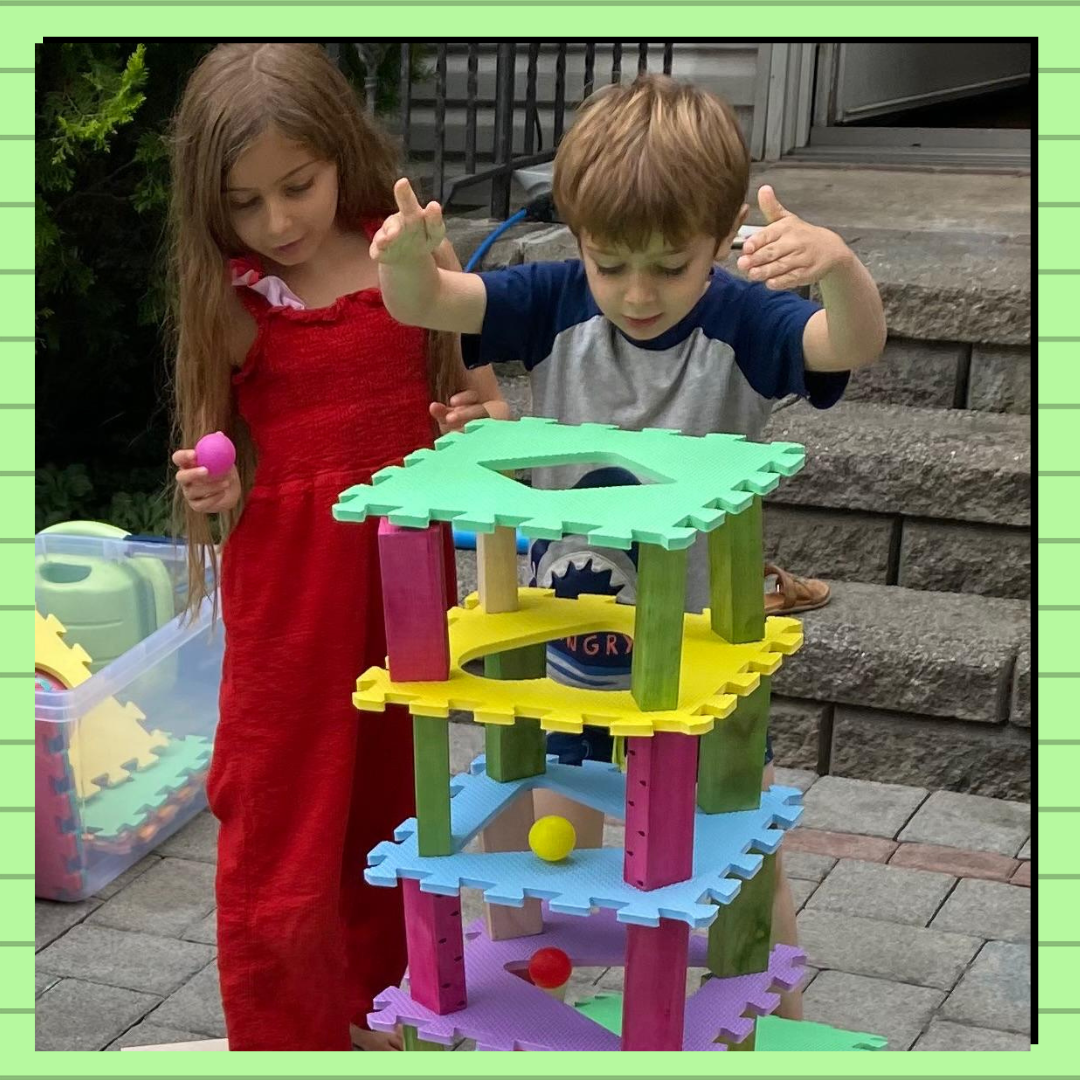How does developing children’s creative thinking support reducing screen time?
How does fostering creativity in early childhood naturally contribute to reducing screen time and boost their development and well-being?
Once upon a time, when kids jumped between hopscotch and jump rope, electronic games didn’t exist, and no games moved independently. Before the age of screens and high-tech, most objects and games would only move if we instilled movement into them and if we gave them meaning.
Yet, all children still played and enjoyed endless play.
The Power of Play: A Timeless Tool for Children’s Development
Play has always been a place for relaxation, replenishment, and learning. Children develop various skills, form social connections, and acquire essential life skills through play.
In the past, the brain naturally initiated activities; otherwise, what else would we have done? And how wonderful it was…
Today, despite the rise of screens in our lives, humans still have the exact developmental needs and potential to imagine, explore, and create.
What Makes an Experience or Activity Irresistibly Engaging
So, what once caused—and still causes—ordinary objects to captivate and excite children and adults alike? What ” superpowers ” spark an immediate desire to engage in activities that don’t involve screens?
The first “superpower” is memory, the ability to connect images with emotions instantly. Think about that for a moment. Do you remember a game you loved playing or an activity you disliked? How do these memories make you feel, and what do they immediately trigger in you?
Having experienced something before can elevate or lower its value. Whether it was a game or any other interactive experience, we instantly categorize it as positive or negative. Naturally, the more positive the experience, the stronger our desire to revisit it later in life.
Associative Thinking: Turning Everyday Objects into New Adventures

The second power is associative thinking. Have you ever seen something that reminded you of something else and immediately thought of a creative way to use it? For example, a shell-shaped pasta is typically associated with cooking. Still, what if this pasta could become part of a beach scene by adding glue and some paint, transporting children into a world of imagination and creative play?
This is associative thinking—finding similarities between things from different worlds. We can identify new, practical ways to use the object at hand based on these similarities.
Curiosity: The Primal Force Behind Exploration and Growth
The third power is curiosity—the innate drive to explore the world around us and examine materials without instruction or direction. Curiosity is the most primal and foundational of the three: memory, associative thinking, and curiosity.
Think about infants. In the early stages of life, they have no prior memory. They encounter new objects, textures, smells, and sounds for the first time. Yet, they possess an internal drive that compels them to taste, touch, grasp, and observe objects, crawl toward them excitedly, and try actions they’ve never attempted.
Curiosity is a potent engine that drives our development as human beings. The desire to explore without being prompted or pushed by anyone powers discovery and growth.
No prior memory is required for curiosity to spark a desire to engage in an activity.
What is Creative Thinking Made of

Curiosity and associative thinking form the foundation of creative thinking. These two powerful internal forces serve us as humans, enriching our world and continually opening new paths of thought and action.
These forces can even save us in times of crisis when quick thinking and resourcefulness are needed to solve a problem using whatever materials are available.
Thanks to these two forces, the world continues to evolve endlessly. New inventions arise, and we’ve progressed from the Stone Age to a much higher quality of life.
How Creative Play Outshines Passive Screen Time
How do memory, curiosity, and associative thinking manifest in the world of play?

Picture a large pile of oversized Jenga blocks, a box of floor tiles, and a basket of ping-pong balls. Could we combine them to create something new that engages children in sustained play in a novel way?
Naturally, the initial thought is to treat each group separately, based on previous experiences: playing Jenga, assembling floor tiles, or bouncing ping-pong balls. However, children’s curiosity kicks in once these items are placed together. They begin exploring how to combine the objects and create something new. Their young minds start to make connections, recognizing the potential in the different properties of each object (watch the video ⬆)
Thanks to associative thinking, the children realize they can build a structure by combining the Jenga blocks and floor tiles. Suddenly, they collaborate, excitedly exploring other ways to develop their project—creating something from nothing.
Encouraging creative thinking in children is valuable for combating excessive screen time. It illuminates the potential hidden in everyday objects, bringing them to life in ways that speak to children’s hearts and draw them into imaginative play. Creative thinking helps them create more continuous activities and games from familiar and unfamiliar objects around them. They don’t need to be flooded with attractions that cost money to be engaged. They need to keep their creative brain solid and well-developed; they only need many opportunities to use them.
